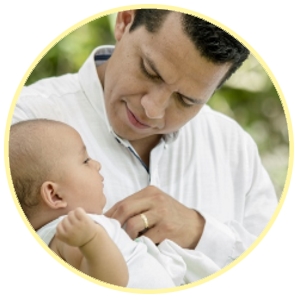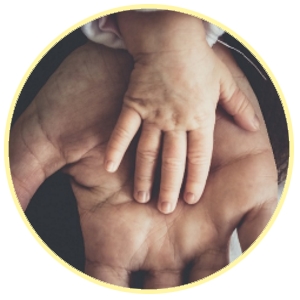All babies are different and have their own unique way of communicating with the world.

For most parents, babies can be both adorable and fascinating, but also a bit of a mystery and confusing. It can take time to get to know your baby, their unique temperament and their likes/dislikes. Babies communicate through their behaviour (e.g. movements, sounds, responses) and have their own special language to let you know what they need. For example, your baby will give you special cues when they need a feed or a sleep. Sometimes, it can be difficult to work out what your baby needs.
Dr. T.B. Brazelton a Paediatrician identified six ‘baby states’ of alertness which is common in most babies. Tuning into your baby and identifying which ‘state’ your baby is in can help work out what your baby might need. The six ‘baby states’, which include 3 states of sleep and 3 states of alertness, are as follows:
- Deep Sleep. Your baby is lying still, without movement and their eyes are closed. They do not respond much to noise or touch. They may have brief startles but do not waken.
- Active (Light) Sleep. Your baby is sleeping but easily aroused by noise or touch. They may twitch and make small movements.
- Drowsy State. Your baby is stirring, moving between waking and sleeping. Their limbs may be moving, and their eyes might be opening and shutting.
- Awake, alert State. Your baby is awake, calm and interested in watching you and the world around them. They enjoy being held and played with during this state.
- Alert, but fussy State. Your baby’s movements may be jerky, and their limbs will be moving and squirming about. Your baby may appear uncomfortable and on the edge of crying. If soothed, they may be brought to an alert, calm state.
- Crying. This is your baby’s main method of communicating their basic needs, e.g. hunger, tiredness, boredom, uncomfortable due to a dirty nappy. While this can be difficult for parents to hear, this is an effective way of your baby letting their parents know they need something.
It can be helpful for parents to hold in mind that crying (and parental response to this) is part of a baby’s communication system and although it can be difficult to hear, it is normal- for babies to cry at times. To support understanding what each cry might mean and therefore how best to respond the acronym PURPLE is used to describe “specific characteristics of an infant’s crying during this phase and let parents and caregivers know that what they are experiencing is indeed normal”. For more information about PURPLE crying please follow this link:
What is the Period of PURPLE Crying?
Find out more about your baby’s unique language at Your Baby’s Language – Brazelton Centre UK
Find out more about your baby’s different ‘states’ here Getting to know your baby
NHS Leeds Community Healthcare have produced this handy leaflet on Understanding Your Baby.
Solihull Approach Online Courses
The Solihull Approach have online courses for support in understanding both baby and child that can be accessed for free by anyone living in Scotland, using the access code TARTAN.
Understanding your baby is for all parents, grandparents and carers welcoming a new baby and has been designed to include all the practical information and advice you might hope for from a traditional baby group, with the additional benefit of support around emotional and mental wellbeing for you and your baby. The resources and information included are focused on the first year of your baby’s life. You might find our course on Understanding your child: from toddler to teenager more helpful if your baby is over one.

















